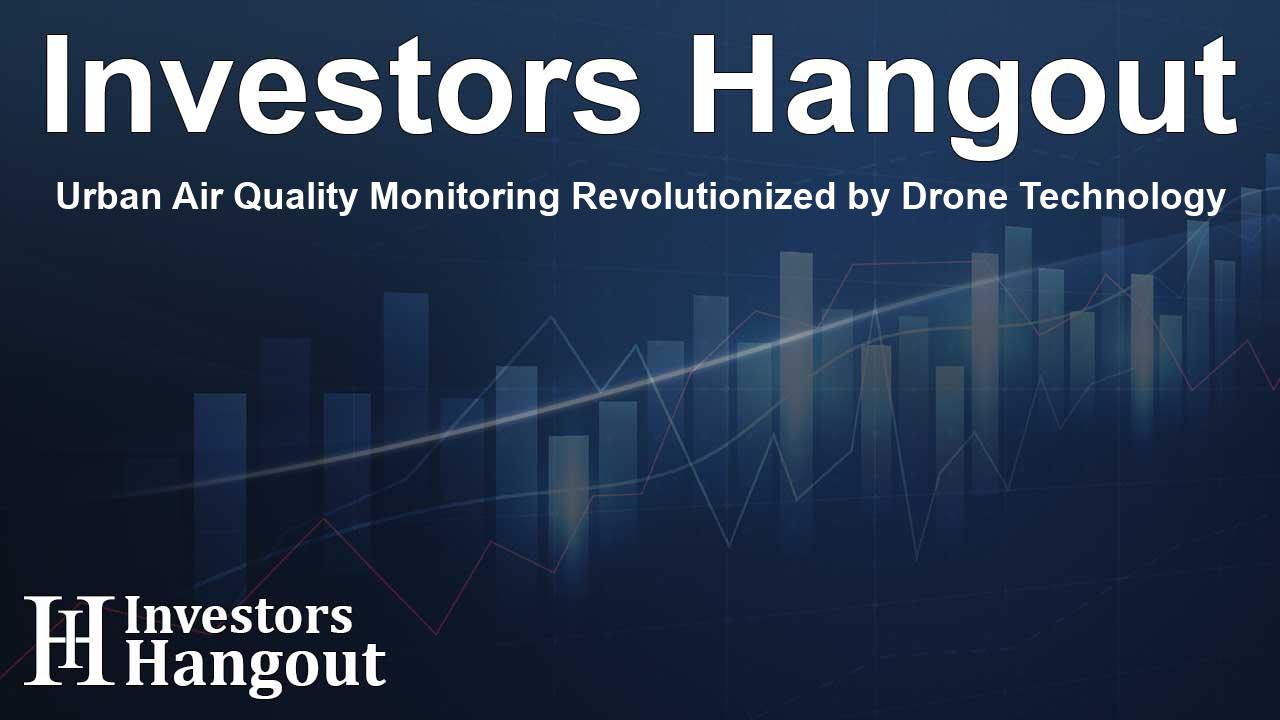Urban Air Quality Monitoring Revolutionized by Drone Technology

Emerging Trends in Urban Air Quality Monitoring
In recent years, the urban air quality sensor market has gained significant traction, highlighting a pivotal shift towards innovative monitoring solutions. The integration of drone technology has revolutionized how air quality is assessed in bustling urban environments. Drones are proving to be invaluable tools, offering a quick and versatile approach to air quality management compared to traditional stationary monitoring stations.
Market Growth Insights
According to recent market research, the Drone-Based Urban Air Quality Sensor market was valued at USD 1.08 billion in the previous year and is expected to expand to USD 3.28 billion by the end of the forecast period, reflecting a compound annual growth rate (CAGR) of 14.99% from 2025 to 2032. This growth is primarily driven by a heightened awareness of the adverse effects of air pollution on environmental and public health.
Contributing Factors to Market Expansion
The rising levels of urban pollution necessitate robust monitoring systems. Drones, equipped with air quality sensors, provide flexible and cost-effective solutions, particularly in compliance with smart city initiatives. Additionally, the increasing emphasis on environmental regulations is fueling both the demand and development of drone-based monitoring technologies.
Market Segmentation Analysis
To gain a deeper understanding of this thriving market, it's essential to examine various segments:
Product Types
Within the drone segment, Fixed-Wing Drones lead the market, capturing over 51% of market share due to their extended flight durations and ability to cover vast urban areas. On the other hand, Rotary-Wing Drones have emerged as the fastest-growing category, thanks to their agility and effectiveness in dense urban settings, boasting a CAGR of 15.68%.
Sensor Technology
Gas Sensors hold the majority of the market share, significantly influencing detection capabilities for harmful pollutants. Particulate Matter Sensors, meanwhile, are witnessing exponential growth due to their precision in monitoring fine particles that pose health risks.
Applications and End-Users
Air Pollution Monitoring is the leading application area, accounting for a substantial share, while Emission Source Detection is rapidly expanding due to the need for identifying pollution sources. Governments and municipalities make up a significant portion of end-users, emphasizing the importance of maintaining urban air quality.
Regional Analysis of the Drone-Based Market
In terms of revenue, North America currently dominates the market, capturing approximately 39.11% of the total share, significantly influenced by stringent air quality regulations. As we look toward the future, the Asia Pacific region is poised for remarkable growth, with a projected CAGR of 15.66%, driven by the surging demand for real-time air quality assessments due to industrial expansion.
Key Industry Players
The competitive landscape includes notable companies such as:
- DJI Innovations
- Parrot SA
- AeroVironment Inc.
- PrecisionHawk
- Delair
- Yuneec International
- Microdrones GmbH
- Honeywell International Inc.
- Innovative startups like Flyability and AirSense Analytics are also making waves in this space.
Future Outlook of the Market
Moving forward, the drone-based urban air quality sensor market is set to grow robustly, influenced by ongoing technological innovations and regulatory frameworks. For instance, recent product launches like DJI’s Matrice 3D Air Quality Edition embody the commitment to enhancing air quality monitoring capability by incorporating advanced sensing technologies.
Frequently Asked Questions
1. What is driving the growth of the drone-based urban air quality sensor market?
The growth is primarily driven by increasing pollution levels, the demand for real-time air quality monitoring, and the implementation of smart city initiatives.
2. Which products lead the drone air quality sensor market?
Fixed-Wing Drones currently lead the market, while Rotary-Wing Drones are the fastest-growing segment due to their versatility.
3. What are the primary applications of these sensors?
Major applications include air pollution monitoring and emission source detection, with significant demand from government and municipal sectors.
4. How is the regional landscape of this market evolving?
North America currently dominates the market, but the Asia Pacific region is expected to experience the fastest growth due to industrial expansion.
5. Who are the key players in the market?
Key players include DJI Innovations, AeroVironment, and Honeywell, among others, contributing to a competitive industry landscape.
About The Author
Contact Lucas Young privately here. Or send an email with ATTN: Lucas Young as the subject to contact@investorshangout.com.
About Investors Hangout
Investors Hangout is a leading online stock forum for financial discussion and learning, offering a wide range of free tools and resources. It draws in traders of all levels, who exchange market knowledge, investigate trading tactics, and keep an eye on industry developments in real time. Featuring financial articles, stock message boards, quotes, charts, company profiles, and live news updates. Through cooperative learning and a wealth of informational resources, it helps users from novices creating their first portfolios to experts honing their techniques. Join Investors Hangout today: https://investorshangout.com/
The content of this article is based on factual, publicly available information and does not represent legal, financial, or investment advice. Investors Hangout does not offer financial advice, and the author is not a licensed financial advisor. Consult a qualified advisor before making any financial or investment decisions based on this article. This article should not be considered advice to purchase, sell, or hold any securities or other investments. If any of the material provided here is inaccurate, please contact us for corrections.
